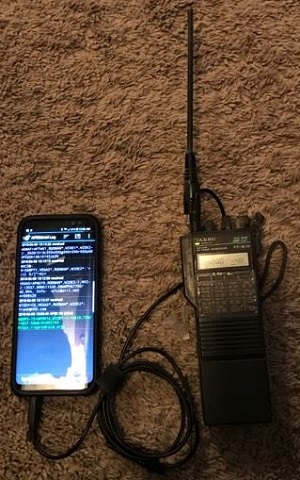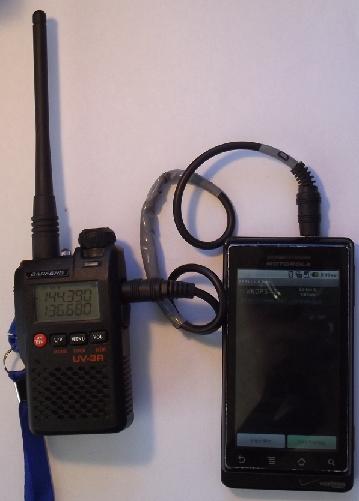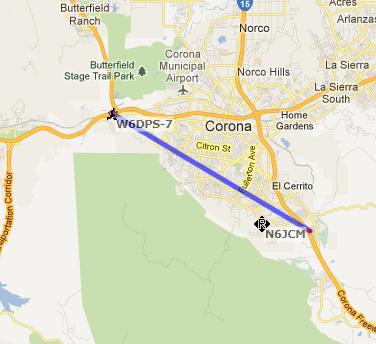
HOME Ham Projects Outward Links Links to this site
UPDATE!
I have redone the project for rocket tracking.

I have been looking into using APRS for tracking high power rockets. I have been launching with The Rocketry Organization of California (ROC) for a long time. I first got certified for high power in 1999. Since my rockets may go well out of sight, possibly two miles high and drift several miles downwind, being able to track them is very important.
Since there is no need to transmit to the rocket, I only need to be able to receive and decode APRS. For the receiving station, I use an HT or scanner and a cable to adapt to my phone. This is the same cable detailed below, except only for receive. I can decode regular APRS on 144.390MHz, as well as APRS format data on UHF from specific rocket trackers.
Among the most popular rocket trackers are the units made by Big Red Bee. They are self-contained, very small and light, and programmable throughout most of the 70cm band.
I tested this rig at the June 2018 ROCstock rocket launch, with good results.
I shamelessly stole this idea from a post by KC7IPV on 4x4Ham.com.

As a matter of fact, I bought the Baofeng radio specifically because it has VOX and for use specifically with this project.
The interface cable uses three contacts from a four contact, 3.5mm, plug on each end--of course not the same pins! The plugs are the same as the one used by slightly older Yaesu HTs.
I was able to find the pinout for the Baofeng on the Yahoo Group for the radio, and chopped up a Yaesu cloning cable and re-arranged.
I did put 500 ohm resistors in the audio lines to reduce the drive into the mic inputs a bit.
On the Baofeng end, the common is the contact closest to the plug body, the speaker out is the tip, and the mic input is the ring closer to the tip.
On the Droid end, the mic is the contact closest to the plug body, the common is the ring closer to the body, and the speaker is the tip.
If you count contacts starting at the tip as one:
Baofeng, 1=speaker out; 2=mic in; 3=Push-to-talk (not used in this application), and 4=common
Droid, 1=Left speaker out, 2=right speaker out (not used in this application), 3=common, and 4=Mic input
Hopefuly some of that is clear. Here is an attempt at a drawing:

The program web site
Where I bought the HT
Where you can get connectors
It seems to basically work for transmitting and receiving.

Last updated 6/15/18